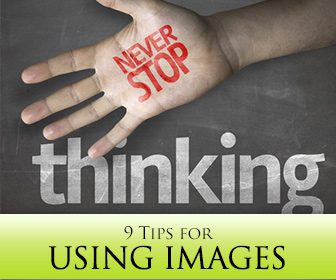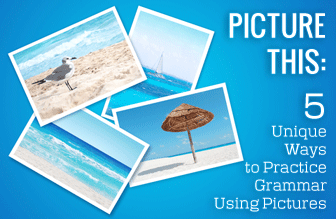Kick Start Your Studentsí Creativity: 9 Tips for Using Images


Grammar can be incredibly dry and tedious if you allow it to be, but with a little inventiveness, you can be sure that each and every time you approach a grammar lesson, you have an arsenal of engaging activities. One of the best ways to get inspired is to let pictures do the work for you. These 5 unique ways to practice grammar using pictures will serve you indefinitely because you can adapt them, recycle them and make them your own in many different ways.

The first thing you need to do immediately is get your hands on a stack of twenty to thirty magazines. Some of the best choices are those that use thick paper, vivid images, and approach a variety of topics. Magazines like: O, National Geographic, Martha Stewart Living, Cosmo, Glamour, etc. will serve you really well. Take some time and compile all different categories of pictures including: famous people, people doing things, pictures of the home, street scenes, animals, food, rooms in the home, odd cartoons, diverse people and groups of people, interesting and colorful objects, etc. I recommend gluing them to construction paper and laminating them if you have the option. You will get years of use of them and continue to add to them as time goes on.
People pictures should be number one on your list as you will use them the most for activities. There are so many ways you can use people pictures, there is no way to list them all. Here are some ideas to get you started. 20 questions with famous people (is it a man? is he a singer?); describing people using picture; what are they doing; What happened or what is happening? Create a story from the picture; write the sequence of a story for the picture and share.
There are numerous ways you can utilize pictures of people in the ESL classroom. Try out different activities with different levels to create your toolbox of go-to exercises.
You can also do a lot with cartoons, news pictures, or oddly-themed pictures. Have the students write their own captions to create a punch line. You can utilize news stories or current events and have them write short captions that tell what is happening in the picture using a reporter tone. I have even used Calvin and Hobbs by whiting out all the dialogue and ask students to fill in their own dialogue and/or captions. You can give them perimeters or you can leave it wide open. Think beyond what is happening in this picture. Challenge their critical thinking skills and creativity for powerful results.
Cut-up stories can be a lot of fun with pictures. You can practice things like sequence, directions, story-telling, and various tenses with cut-up stories. Essentially it is a puzzle made of photographs. Have a stack of 8-10 photographs that are related so that they can be put in some kind of order (sequence, what happened, solve a crime, etc.). Put the students in small groups and have them examine the pictures. Tell them what the goal is. For example, tell a story by putting these 7 pictures into an order. Give the people names and don’t just tell me the obvious, use your imagination and create a fictional story. For a lower level, it could be something like this: there are 10 pictures in your envelope. Each envelope shows a different activity being done and you need to put them order and describe each of the steps. Examples could be making a cup of tea, making a sandwich, how to take the bus, etc. What you choose will be based on what topic(s) you would like them to practice.
This is a fun picture activity that can be approached for low intermediate or above. You can use more abstract pictures or artwork for this activity. Take a variety of photographs that are 8x 10 or larger and paste them on either construction paper or cardboard. You will then want to cover up most of the picture using squares of paper.
I tend to do this on the board with magnets, but you could also use double-sided tape. You’ll want to be able to pull off each square easily. This is essentially a guessing game where they should be asking a lot of questions. You want them to determine what the picture or piece of artwork is with only a limited peek at the photograph. If students don’t have any guess, reveal a little more and have them ask more questions. Continue until the entire picture is revealed or someone answers. You can vary this activity by doing it in smaller groups and by applying it to different language lessons.
This activity is often a favorite of students. It is Pictionary on steroids and much more challenging. The best grammar activities to use this for are: there is/there are, prepositions of place or direction combined with house vocabulary, or what is happening in the picture. Put the students into pairs and give each student a picture, face down. Tell them to take a turn describing their picture to their partner with several sentences and descriptions. The partner has to draw what their partner tells them. For example, their partner says, “This is a picture of a kitchen. In the kitchen on the right hand side there is a big refrigerator. Next to the fridge there is a long cabinet. On top of the cabinet there is a vase with flowers. ” You’ll want to monitor how much concrete information they are giving and let the partner know that they can ask clarifying questions. After a few minutes have them switch. At the end of the activity, you can debrief as a class by looking at the original picture and comparing it the one that was drawn. It is a terrific activity to combine lots of listening and speaking skills along with comprehension of vocabulary and grammar.
You can constantly improve your activities by looking at what went well and what fell flat. These 5 unique ways to practice grammar using pictures are a jumping off point, and can be expanded in lots of interesting ways.